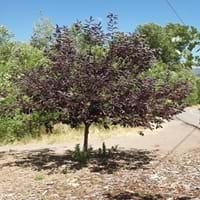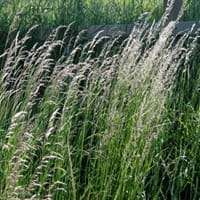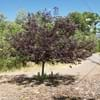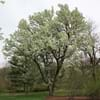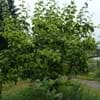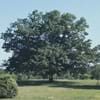Life Span
Perennial
Perennial
Origin
North America
Europe, Asia
Types
Not Available
Blue Oat grass
Habitat
Moist Soils, open Woodlands, Pine barrens, Swamps
Cropland, gardens, Grassland, Roadsides
USDA Hardiness Zone
3-8
4-9
AHS Heat Zone
8-1
Not Available
Sunset Zone
A1, A2, A3, 1a, 1b, 2a, 2b, 3a, 3b, 10, 16
1a, 1b, 2a, 2b, 3a, 3b, 4, 5, 6, 7, 15, 16, 17, 23, 24
Habit
Thicket/Colonizing
Clump-Forming
Flower Color
Not Available
Brown
Flower Color Modifier
Bicolor
Bicolor
Fruit Color
Not Available
Brown
Leaf Color in Spring
Not Available
Gray Green
Leaf Color in Summer
Not Available
Light Green
Leaf Color in Fall
Not Available
Dark Green
Leaf Color in Winter
Not Available
Tan, Brown
Leaf Shape
Oval
Grass like
Plant Season
Spring, Summer, Fall
Not Available
Sunlight
Full Sun, Partial Sun, Partial shade
Full Sun, Partial Sun
Growth Rate
Medium
Medium
Type of Soil
Clay, Loam, Sand
Loam
The pH of Soil
Acidic, Neutral, Alkaline
Acidic, Neutral
Soil Drainage
Average
Average
Bloom Time
Spring
Early Summer
Tolerances
Not Available
Drought
Where to Plant?
Ground
Ground
How to Plant?
Grafting, Seedlings, Stem Planting
Seedlings
Plant Maintenance
Medium
Medium
Watering Requirements
Keep the ground moist but not water-logged, Requires regular watering
Does not require lot of watering, Water occasionally
In Summer
Lots of watering
Lots of watering
In Spring
Moderate
Moderate
In Winter
Average Water
Average Water
Soil pH
Acidic, Neutral, Alkaline
Acidic, Neutral
Soil Type
Clay, Loam, Sand
Loam
Soil Drainage Capacity
Average
Average
Sun Exposure
Full Sun, Partial Sun, Partial shade
Full Sun, Partial Sun
Pruning
Remove branches that rub together, Remove dead branches
Remove damaged leaves, Remove dead branches, Remove dead leaves
Fertilizers
All-Purpose Liquid Fertilizer
All-Purpose Liquid Fertilizer
Pests and Diseases
Red blotch
Red blotch
Plant Tolerance
Drought
Drought
Flowers
Showy
Not Available
Flower Petal Number
Not Available
Single
Foliage Texture
Not Available
Not Available
Foliage Sheen
Not Available
Matte
Attracts
Birds, Butterflies
Not Available
Allergy
Not Available
Asthma, Itchy eyes
Aesthetic Uses
Beautification, Showy Purposes
Not Used For Aesthetic Purpose
Beauty Benefits
Not Available
Not Available
Environmental Uses
Air purification
Air purification
Medicinal Uses
Asthma, Bronchitis, Cough, Diarrhea, Dysentry, Fever, Stomach Ulcers
Arthritis, Headache, Stomach pain
Part of Plant Used
Bark, Fruits
Whole plant
Other Uses
Used As Food
Used as a nutritious food item
Used As Indoor Plant
No
No
Used As Outdoor Plant
Yes
Yes
Garden Design
Foundation, Hedges, Mixed Border, Screening / Wind Break, Shade Trees
Bedding Plant, Feature Plant, Groundcover
Botanical Name
PRUNUS virginiana
ARRHENATHERUM
Common Name
Wild black cherry, Cherry bark
Oatgrass
In Hindi
Chokecherry
जई घास
In German
Chokecherry
Ährengras
In French
Chokecherry
Folle avoine
In Spanish
Chokecherry
oat Grass
In Greek
Chokecherry
βρώμη Grass
In Portuguese
Chokecherry
aveia-
In Polish
Chokecherry
Owies trawa
In Latin
chokecherry
oat Grass
Phylum
Magnoliophyta
Not Available
Class
Magnoliopsida
Liliopsida
Clade
Angiosperms, Eudicots, Rosids
Angiosperms, Commelinids, Monocots
Subfamily
Amygdaloideae
Danthonioideae
Number of Species
Not Available
Not Available
Season and Care of Chokecherry and Oatgrass
Season and care of Chokecherry and Oatgrass is important to know. While considering everything about Chokecherry and Oatgrass Care, growing season is an essential factor. Chokecherry season is Spring, Summer and Fall and Oatgrass season is Spring, Summer and Fall. The type of soil for Chokecherry is Clay, Loam, Sand and for Oatgrass is Loam while the PH of soil for Chokecherry is Acidic, Neutral, Alkaline and for Oatgrass is Acidic, Neutral.
Chokecherry and Oatgrass Physical Information
Chokecherry and Oatgrass physical information is very important for comparison. Chokecherry height is 460.00 cm and width 550.00 cm whereas Oatgrass height is 20.50 cm and width 30.50 cm. The color specification of Chokecherry and Oatgrass are as follows:
Chokecherry flower color: Not Available
Chokecherry leaf color: Not Available
Oatgrass flower color: Brown
- Oatgrass leaf color: Gray Green
Care of Chokecherry and Oatgrass
Care of Chokecherry and Oatgrass include pruning, fertilizers, watering etc. Chokecherry pruning is done Remove branches that rub together and Remove dead branches and Oatgrass pruning is done Remove damaged leaves, Remove dead branches and Remove dead leaves. In summer Chokecherry needs Lots of watering and in winter, it needs Average Water. Whereas, in summer Oatgrass needs Lots of watering and in winter, it needs Average Water.
